Buying used skis for beginners or kids can save you money, but it’s not always the best option. While the lower price tag is tempting, used skis often come with hidden risks like damaged bindings, improper sizing, or wear and tear that can impact safety and learning. Here’s the quick takeaway:
- Pros: Affordable, great for testing the waters, and widely available.
- Cons: Safety concerns with old bindings, hidden damage, and sizing issues that make skiing harder for beginners.
If you’re considering used skis, inspect them carefully (bindings, edges, and size are key) and budget for professional adjustments. Alternatively, newer options like Snowfeet* - short, beginner-friendly skis - are gaining popularity. They’re safer, easier to use, and work with regular winter boots, saving you from the hassle of traditional gear.
In short: Used skis are fine if you’re careful, but newer solutions might save you time, money, and frustration in the long run.
Pros and Cons of Used Skis for Beginners and Kids
Benefits of Used Skis
One of the biggest draws of used skis is the cost savings. New beginner skis from well-known brands can be pricey, so finding a good-quality used pair can be a smart way for families to save money while getting started in the sport.
Used skis also let you dip your toes into skiing without making a big financial commitment. If your child decides skiing isn’t their thing after a few outings, you won’t feel like you’ve wasted a fortune on gear.
Another plus? Used skis are easy to find. You can check out local ski swaps or browse online marketplaces to snag a pair quickly.
Potential Risks and Problems
While the savings are tempting, used skis come with some risks that could impact safety and the overall experience. One major concern is the condition of the bindings. Bindings need to be precisely calibrated to ensure safety, and with used skis, they might be worn out or improperly adjusted. If you’re buying used, it’s crucial to have bindings checked and recalibrated by a professional.
There’s also the issue of hidden damage. Problems like edge cracks or core shots might not be visible at first glance but can seriously affect performance and safety.
Sizing is another challenge. Many used skis are designed for adults or experienced skiers, which means they might be too big or unsuitable for beginners, especially kids. Using improperly sized skis can make learning harder and less enjoyable.
Lastly, older skis might lack the features found in newer models. Modern skis often include improvements in turn initiation, stability, and control - features that are especially helpful for beginners. Without these advancements, learning can feel more challenging.
Here’s a quick breakdown comparing used skis to new skis and rentals:
Comparison Table: Used Skis vs. New Skis and Rentals
| Factor | Used Skis | New Skis | Rentals |
|---|---|---|---|
| Cost | Lower upfront cost | Higher purchase price | Moderate daily rates (can add up) |
| Safety Assurance | Uncertain history | Warranty and modern safety features | Professionally maintained |
| Proper Sizing | Limited selection; sizing may vary | Wide range with professional fitting | Expert fitting included |
| Binding Condition | May be worn or outdated | Brand new with proper calibration | Regularly serviced |
| Ease for Beginners | Often less forgiving | Designed for all skill levels | Matched to ability |
| Long-term Value | Risk of hidden issues | Reliable investment over time | Flexible but less consistent |
Used skis are a budget-friendly option, but they come with potential safety and performance concerns. New skis offer reliability and the perks of modern design, while rentals provide flexibility and professional maintenance - though the costs can add up over time.
If you’re weighing your options, you might also want to look into alternatives. For beginners and kids, Snowfeet* products are worth considering. They’re designed with ease, control, and safety in mind, offering a fresh take on learning to ski without the hassle of traditional long skis.
Pot of gold or a trap for the unwary!? - Buying second hand skis
What to Check When Looking at Used Skis
When you're shopping for used skis, a careful inspection is key. It can save you from unexpected safety issues and ensure you’re not stuck with equipment that ruins your time on the slopes.
Physical Inspection
Start with the ski bases - the part that glides on the snow. Look for deep scratches, gouges, or core shots that expose the inner layers of the ski. These kinds of damage can hurt performance and cost a lot to repair.
Next, check the metal edges. They should be sharp and mostly free of rust. A little surface rust is fine, but heavy corrosion or missing sections are big red flags.
Take a close look at the topsheet - that’s the top layer of the ski. Small chips are normal wear and tear, but cracks, peeling, or soft spots could mean the ski's structure is compromised.
Finally, inspect the tip and tail. These areas take a lot of stress, so check for cracks or splits that could affect durability.
Sizing and Fit
Getting the right size ski is especially important for beginners and kids. Many used skis are adult models that might be too long and hard to control for someone just starting out. For kids or beginners, skis should generally reach from the ground to about chest height (roughly 16 inches shorter than their height). For those with a bit more experience, skis that come up to the chin or nose (about 14 inches shorter than their height) are usually a better fit.
If a child’s height puts them between sizes, consider their weight. Lighter kids should go for shorter skis, while heavier kids might do better with slightly longer ones. Confidence and skiing style matter too - shorter skis are better for cautious beginners, while more confident, faster skiers might prefer longer ones. Keep in mind that junior skis are typically designed for kids up to around 5'3" and 120 pounds. After that, you’ll need to look at adult models, but always factor in their skill level and comfort on the slopes.
Proper sizing isn’t just about comfort - it’s a key safety factor that also makes learning easier.
Binding Safety
Bindings are one of the most important safety features on skis. They’re designed to release during a fall to help prevent injuries but stay secure during normal use. Look for a certification sticker or marking on the bindings, and be cautious with bindings older than 10–15 years. Many ski shops won’t service outdated models because they may not meet current safety standards.
Inspect the bindings for cracks, missing parts, or signs of wear. Test the release springs and screws to make sure they work smoothly. It’s essential to have bindings professionally adjusted to match the skier’s height, weight, and skill level. Incorrect settings can lead to serious injuries. Also, double-check that the bindings are compatible with the boot sole type - mismatched bindings and boots can be a safety hazard.
Inspection Checklist Table
| Inspection Point | What to Look For | Red Flags |
|---|---|---|
| Ski Base | Smooth surface, minor scratches | Deep gouges, core shots, heavy damage |
| Edges | Sharp, minimal rust | Heavy rust, missing sections, large nicks |
| Topsheet | Small chips | Cracks, peeling, soft spots |
| Bindings | Certification marks, smooth operation | Over 15 years old, cracks, missing parts |
| Size Match | Proper length for height/skill | Too long for beginners, mismatched weight-to-ski ratio |
| Overall Condition | Normal wear and tear | Major damage or signs of neglect |
While finding the right used skis can take time, don’t forget the extra costs that might come with them. Professional binding adjustments and potential repairs can add $50–$100 to your total. That’s why some families are turning to alternatives like Snowfeet* products. Designed with beginners in mind, Snowfeet* skiblades and skiskates simplify the process by eliminating many of the sizing and safety headaches associated with traditional skis.
sbb-itb-17ade95
Why Snowfeet* Products Are a Better Choice
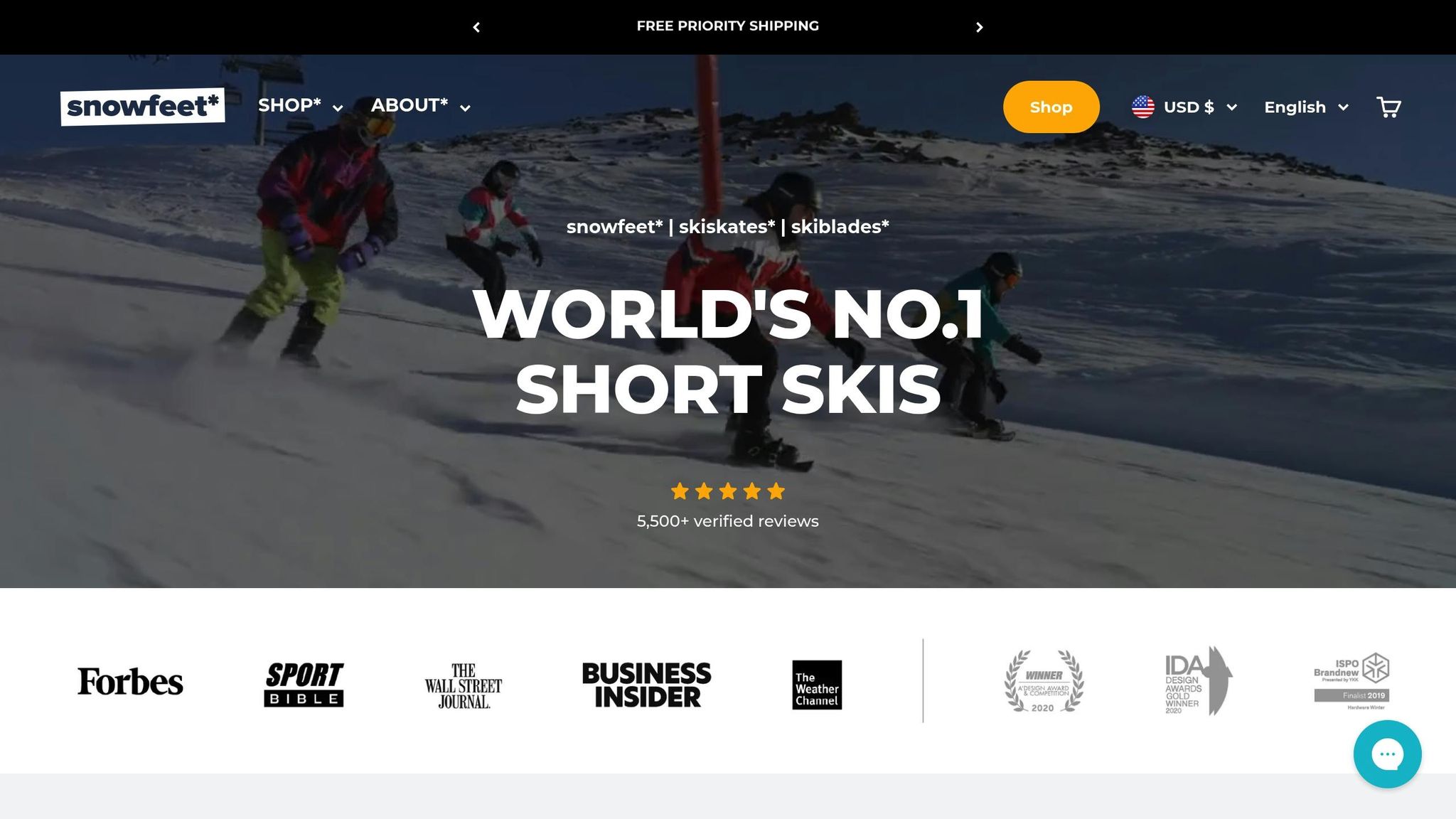
Snowfeet* products tackle the challenges of traditional skis head-on, offering a smarter, easier alternative for beginners and kids. Say goodbye to the headaches of sizing issues and safety concerns that often come with used ski gear.
Designed with Beginners and Kids in Mind
For years, the idea was that longer skis meant better stability. But Snowfeet* flips that notion on its head. Unlike used skis, which often come with sizing risks, Snowfeet* mini ski skates are designed to fit right from the start.
Take the Snowfeet* Mini Ski Skates for example. At just 15 inches long, they’re perfect for kids who are just beginning their skiing adventure. Their lightweight design makes them less intimidating, helping kids focus on mastering balance and control instead of struggling with oversized equipment.
For those moving past the basics, the Snowfeet* PRO (20 inches) and Skiskates (17 inches) offer a step up in performance while still catering to beginners. Their shorter length reduces leverage, meaning less dramatic falls and quicker recoveries - a huge plus for anyone learning the ropes.
Lightweight and Convenient
One standout feature of Snowfeet* products is how portable they are. Unlike traditional skis that require bulky carriers or roof racks, Snowfeet* gear fits snugly in a backpack. No more lugging around 6-foot skis through parking lots or shelling out for expensive transport systems.
And here’s the best part: Snowfeet* products work with regular winter shoes or snowboard boots. That means no need to invest in pricey, uncomfortable ski boots - especially for kids who outgrow them in no time. The adjustable bindings make setup a breeze and can easily adapt as kids grow, saving you time and money.
Built for Safety and Control
When it comes to safety, Snowfeet* products truly stand out. Their shorter design makes them easier to maneuver, eliminating the risk of those long, hazardous edges found on traditional skis.
The lower center of gravity? A game-changer. It helps kids maintain balance, make quick turns, and stop with ease. That added confidence on the slopes often speeds up skill development and makes the experience way more enjoyable.
Snowfeet* vs. Traditional Skis and Snowboards: A Quick Look
| Feature | Snowfeet* Products | Traditional Skis | Snowboards |
|---|---|---|---|
| Cost | $150–$690 | $300–$800+ (plus boots, bindings) | $200–$600+ (plus boots, bindings) |
| Boot Compatibility | Regular winter shoes or snowboard boots | Expensive ski boots required | Snowboard boots required |
| Portability | Fits in a backpack | Requires roof rack or large bag | Requires roof rack or large bag |
| Learning Curve | Short and intuitive | Steep; often needs lessons | Moderate to steep |
| Storage | Minimal space needed | Large storage area required | Moderate storage space |
| Maintenance | Minimal upkeep | Regular tuning needed | Regular tuning needed |
| Versatility | Great for slopes, parks, and backyards | Mainly for slopes | Mainly for slopes |
When you crunch the numbers, the savings are clear. A full traditional ski setup - skis, boots, bindings, and poles - can easily cost between $600 and $1,200. Add in the expenses for binding adjustments and regular maintenance, and the price climbs even higher. Snowfeet* products? They often cost less than half of that over multiple seasons, making them a budget-friendly and practical choice.
Tips for Making the Right Choice
Picking the right winter gear for beginners and kids doesn’t have to be complicated. With a little planning, you can focus on safety, comfort, and getting the most out of your investment.
Try Before You Buy
Testing gear before committing to a purchase is a smart move. Demo programs let you try equipment in real conditions, helping you spot any potential issues. For example, you can check how skis handle turns or whether bindings release as they should. A hands-on trial gives you insights you just can’t get from reading specs.
For Snowfeet* gear, the learning curve is surprisingly quick. Their shorter design feels less intimidating, especially for kids, who often adapt faster than they would with traditional long skis. If you’re curious about Snowfeet*, check with local retailers or see if ski resorts nearby offer them for rent.
Unlike traditional skis, which require more leg strength and precise movements to turn, Snowfeet* gear responds smoothly to even slight weight shifts. After testing, it’s always a good idea to get feedback from a professional to ensure your choice is the right one.
Ask the Experts
Ski shop pros are your go-to for spotting issues in used equipment. They know which brands have faced recalls, which binding systems might be outdated, and how to assess wear and tear. If you’re considering secondhand skis, have them inspected by a certified technician. It’s a small cost that could save you from bigger problems - or even injuries - later on.
For Snowfeet* gear, expert inspections can confirm their safety features and ease of use. Ski instructors are another great resource. They work with beginners all the time and can recommend gear that matches different learning styles and physical needs. Plus, they can help you figure out which equipment will grow with your child, making it a more worthwhile investment.
Think About Growth and Future Use
Kids grow quickly, and traditional ski gear doesn’t always keep up. A pair of skis that fits one season might be too small the next, and fixed bindings often don’t adjust for growing feet. This can lead to frequent - and costly - gear replacements.
Snowfeet* products are designed to address these challenges. They adjust as your child grows, reducing the need for constant upgrades. Beyond that, they’re versatile enough to handle a variety of terrains, from groomed slopes to backyard snow and even packed hiking trails. This flexibility means they’ll likely get more use throughout the winter, giving you more bang for your buck.
Another bonus? Snowfeet* gear is super portable. It fits in a backpack, so there’s no need for roof racks, bulky storage, or extra luggage fees. They’re easy to store and require minimal upkeep, making them perfect for families with limited space or those who prefer no-fuss equipment.
Conclusion: Making the Right Decision
Let’s pull everything together to help you make the best choice for your winter gear. Whether it’s about safety, cost, or convenience, the right equipment can make all the difference in your experience.
When you look at the numbers, used skis might seem like a bargain at $200-400. But don’t forget the hidden costs - binding adjustments, repairs, and replacements as your kids grow. Add in the hassle of lugging around bulky skis and finding storage space, and the appeal starts to fade.
Key Points to Keep in Mind
Here are the main takeaways when deciding:
- Safety comes first: Used skis often have worn-out bindings and need more effort to control, which could make them less safe.
- Kids grow fast: Traditional skis don’t grow with them, meaning you’ll be buying new gear more often.
- Easy to carry and store: Snowfeet* gear is compact enough to fit in a backpack and works with regular winter boots.
- Go anywhere: Unlike traditional skis that are limited to slopes, Snowfeet* gear is versatile - perfect for resorts, backyard snow, or even hiking trails.
- Simple to learn: Snowfeet* products respond to natural weight shifts, making them easier for beginners to pick up.
Snowfeet* gear ranges in price from $150 for Mini Ski Skates to $690 for 120cm Short Skis. While the upfront cost might seem higher than used skis, you’re paying for durability, safety, and gear that works across different conditions and seasons. Over time, that can save you money and headaches.
Ultimately, the choice depends on what matters most to you. If you’re okay with a short-term solution and can ensure the safety of used skis, they might work for now. But if you want gear that grows with your kids, prioritizes safety, and makes winter adventures easier and more fun, Snowfeet* gear checks all the boxes. It’s compact, safe, and versatile - qualities that make it a great pick for beginners and families alike.
FAQs
What should I look out for when buying used skis for beginners or kids?
When shopping for used skis, especially for beginners or kids, safety has to come first. Take a close look for any signs of trouble: cracks, delamination, rust, loose or damaged bindings, or visible impact damage like core shots. Skis with damaged edges or bindings that don’t meet current safety standards can put the skier at risk.
Steer clear of skis that are over 10 years old. Older gear might not perform well and often doesn’t align with modern safety standards. And here’s a must: always have the bindings checked and adjusted by a certified technician. They’ll make sure everything is safe and set up correctly for the skier’s weight and skill level.
Are Snowfeet products better than traditional skis for beginners and kids?
Snowfeet products are a great option for beginners and kids when compared to traditional skis. Their compact size (ranging from 15 to 47 inches) and lightweight build make them much easier to handle. This design helps new users get the hang of steering, turning, and balancing more quickly, boosting confidence and reducing the chances of falls. Plus, it makes the whole experience safer and more fun.
Traditional skis can often feel big and a bit overwhelming, especially for first-timers. Snowfeet, with their shorter length, offer better agility and control, making them less intimidating. This simplicity means beginners can pick up the basics faster and enjoy a smoother learning experience. If you're looking for an easy and enjoyable way to hit the slopes, Snowfeet products are a solid choice without the usual challenges of traditional ski gear.
How can I tell if used skis are safe and a good fit for my child?
When checking out used skis for your child, start by looking closely at their condition and fit. Take a good look at the edges - check for rust, dents, or chips, as these can mess with both safety and how well the skis perform. A quick trick: run your fingernail along the edges. If you feel any bumps or gouges, that’s a sign of trouble. Don’t forget the base - deep scratches, cracks, or peeling layers (delamination) can spell durability issues.
The bindings deserve just as much attention. They need to be firmly attached, free of cracks or rust, and suitable for your child’s weight and skill level. A good rule of thumb? Stick with bindings that are less than ten years old to make sure they meet current safety standards. And, of course, size matters - skis that are too big or too small can make learning frustrating and less fun for your kid.
If you’re looking for an easier, beginner-friendly option, check out Snowfeet’s lineup. Their skiblades, skiskates, and mini skis are lightweight, super portable, and designed for better control. They’re a great alternative to traditional skis, especially for kids and those just starting out.

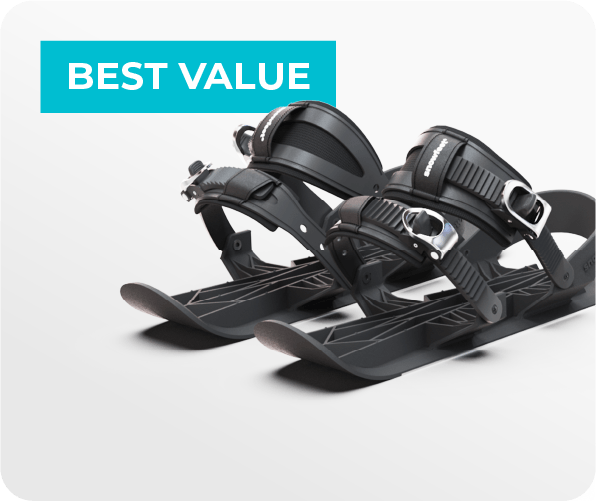



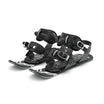
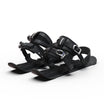
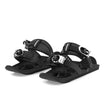
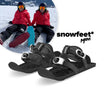
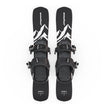
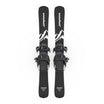

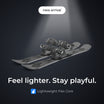
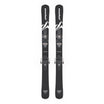
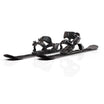
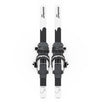


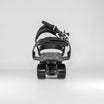

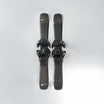

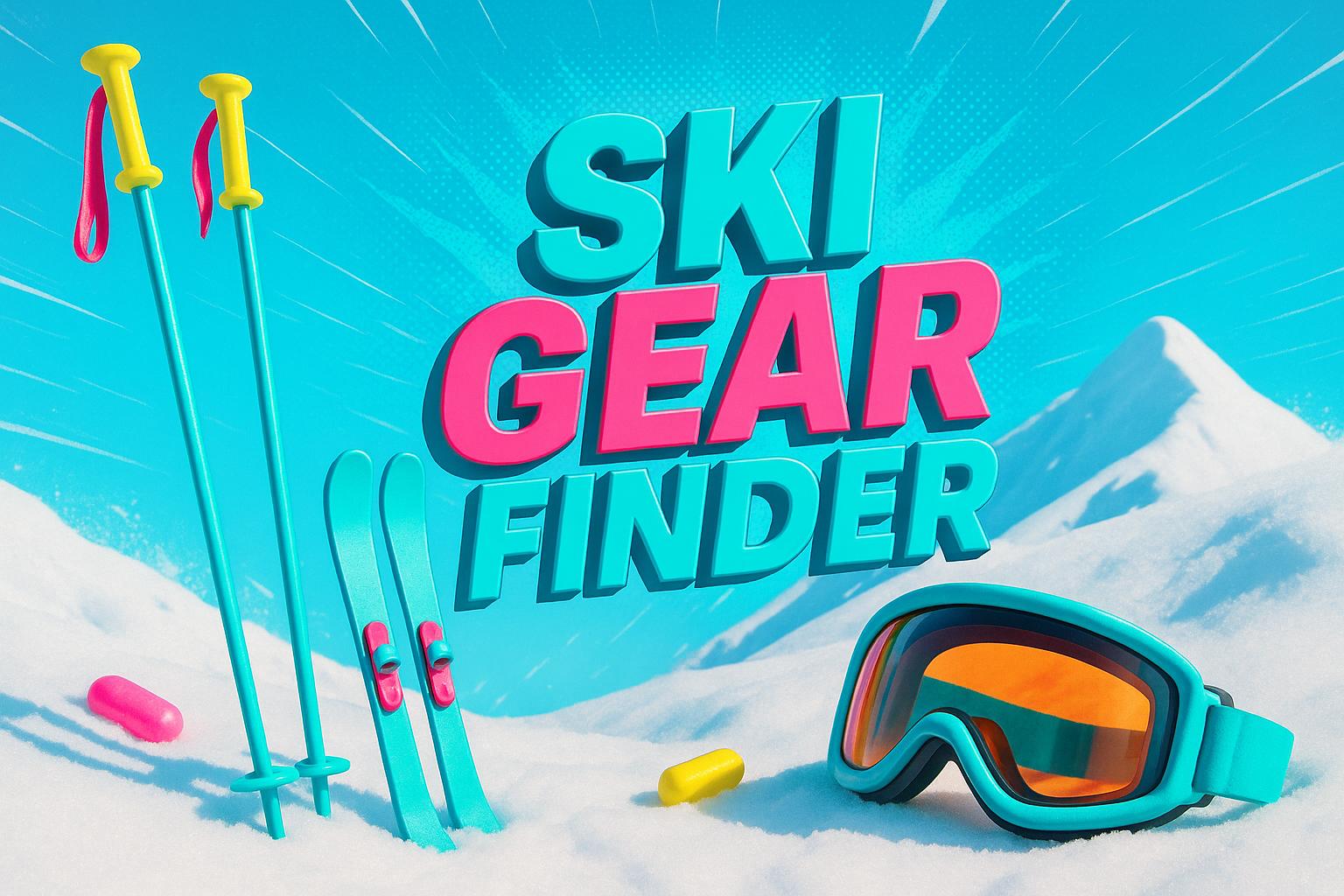
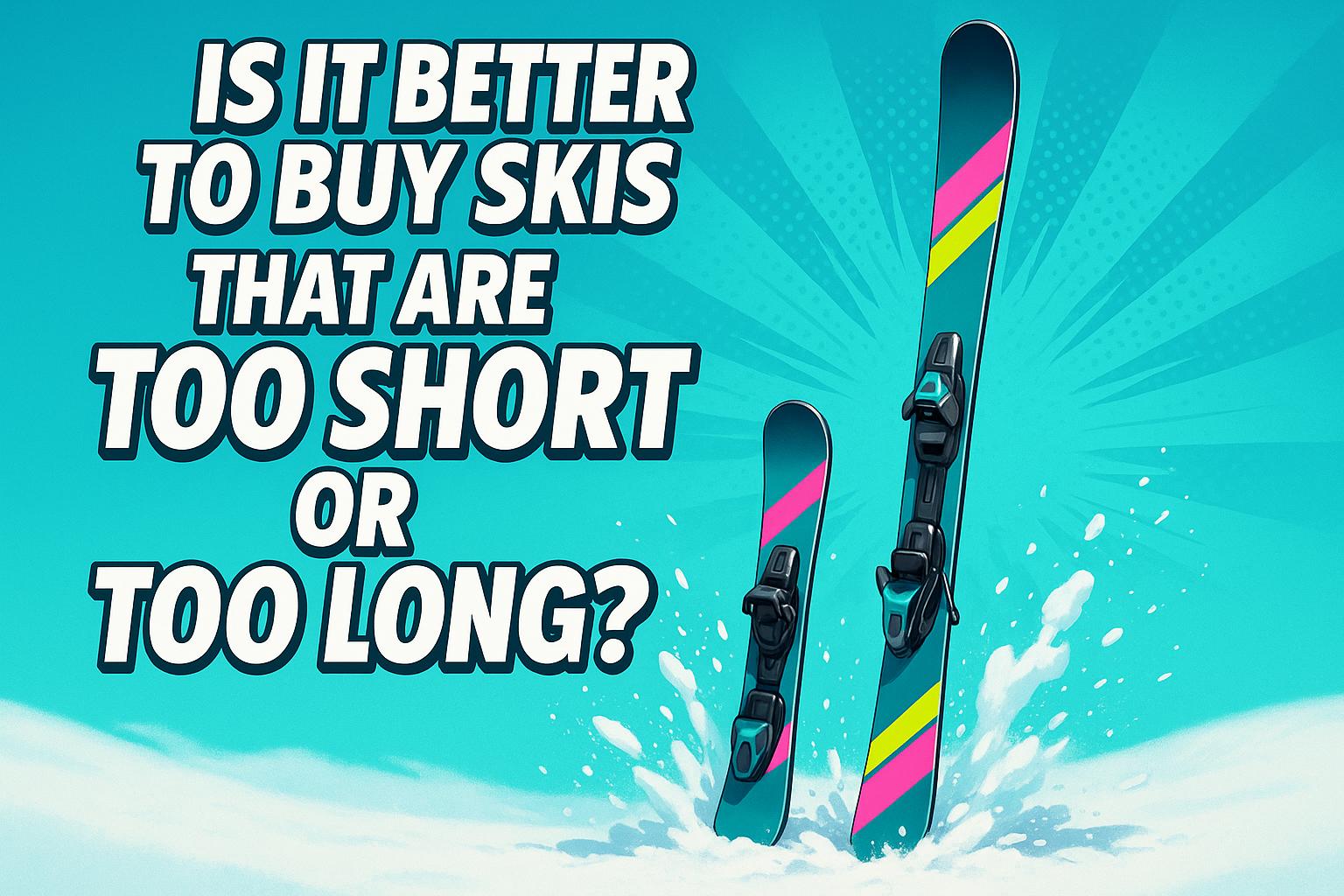
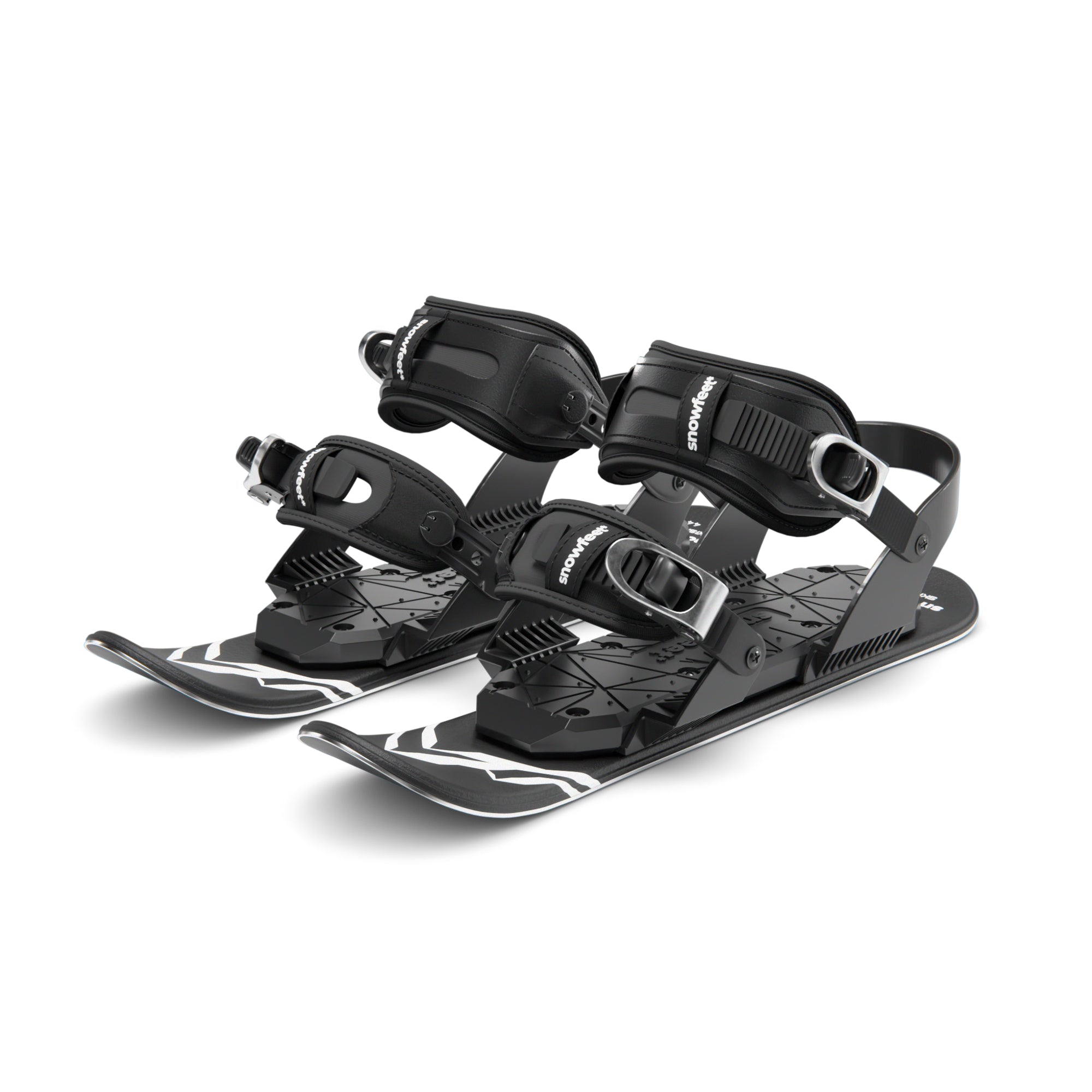

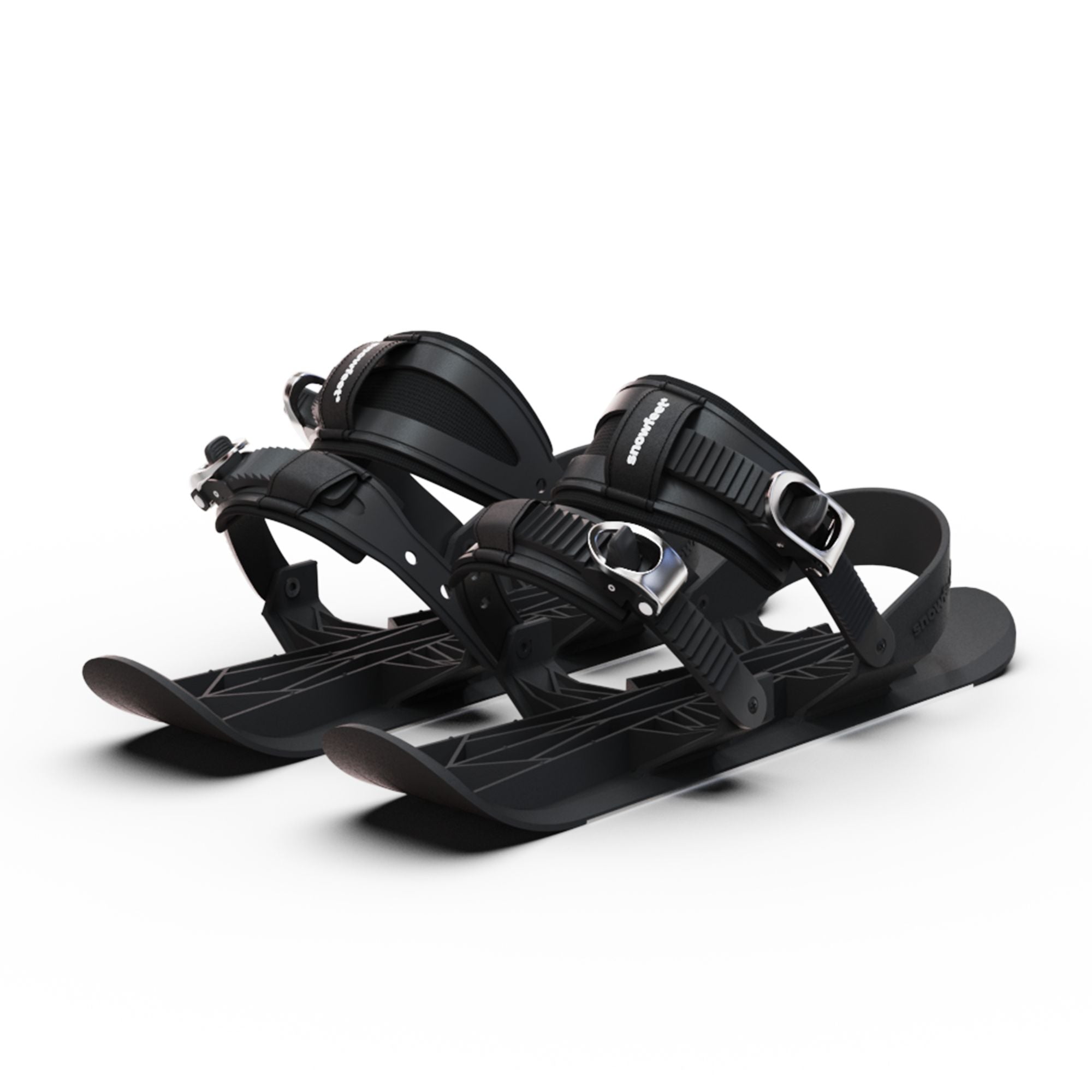
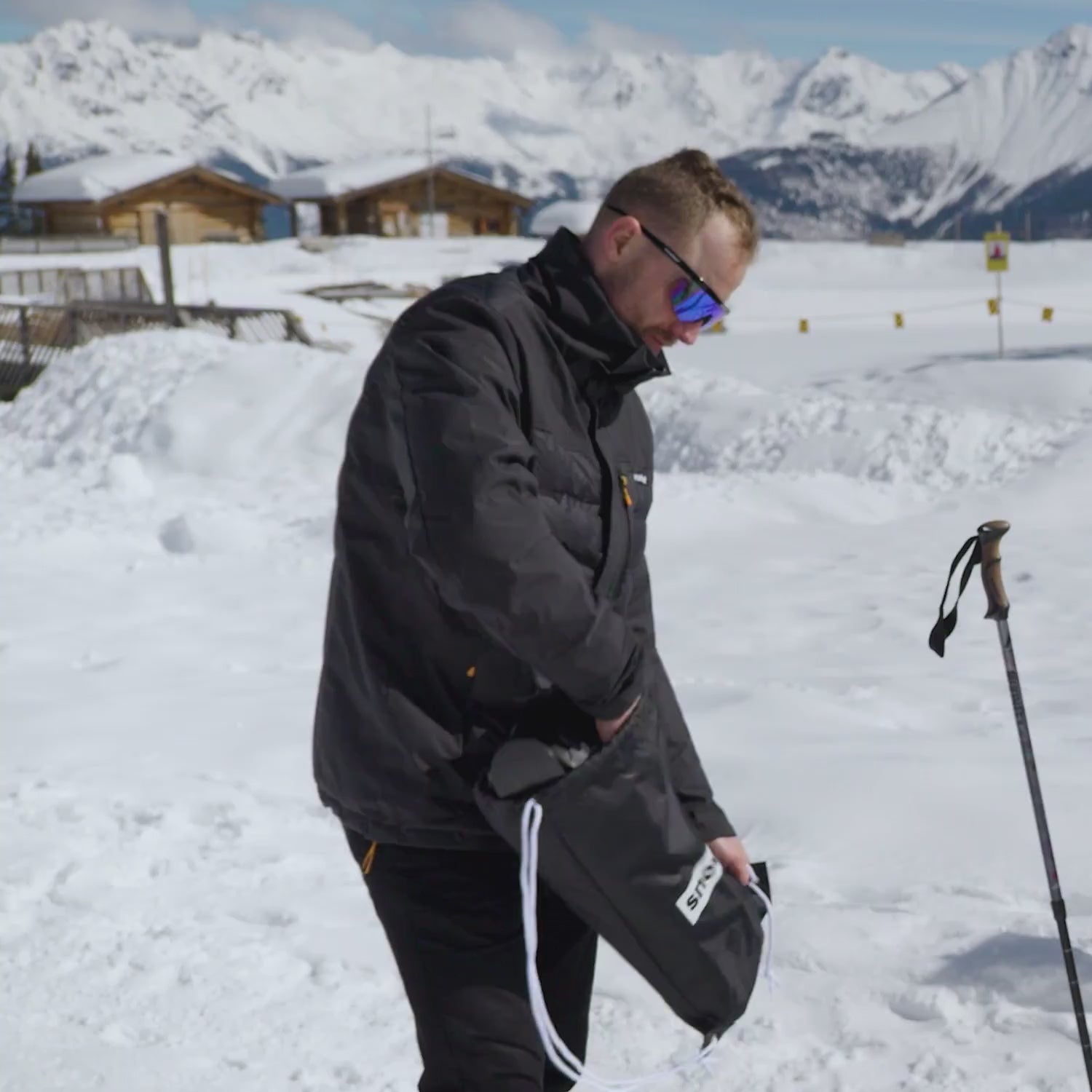
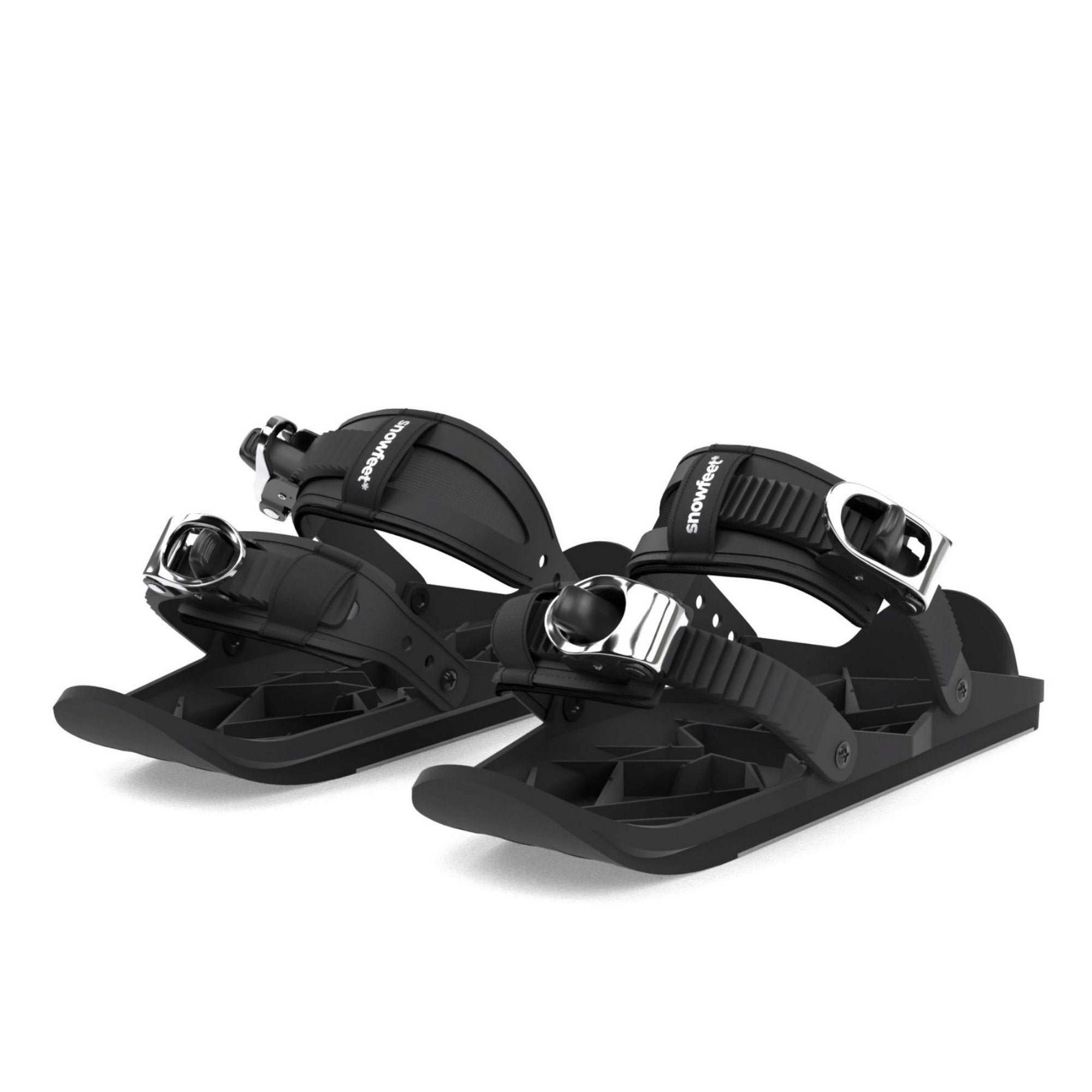
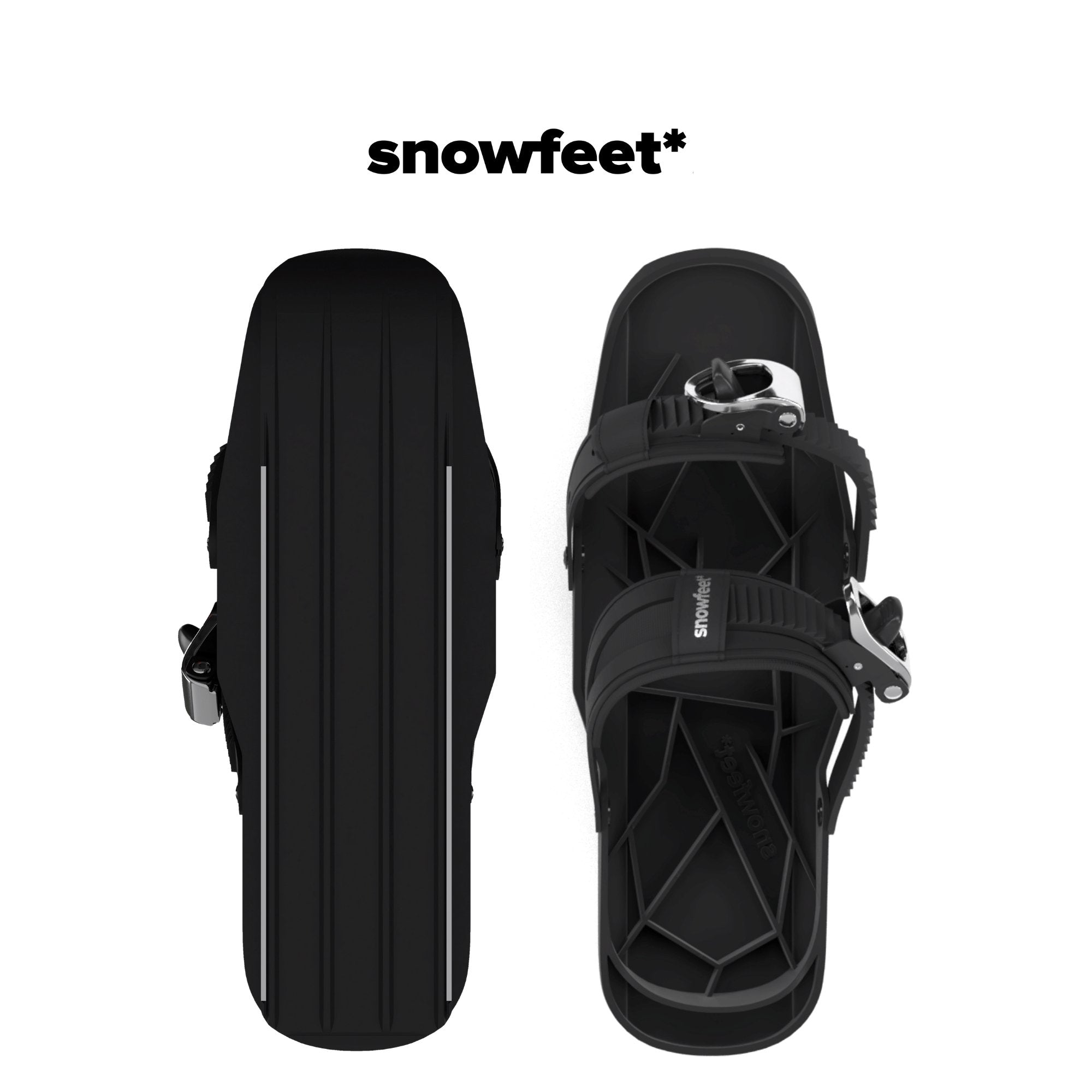
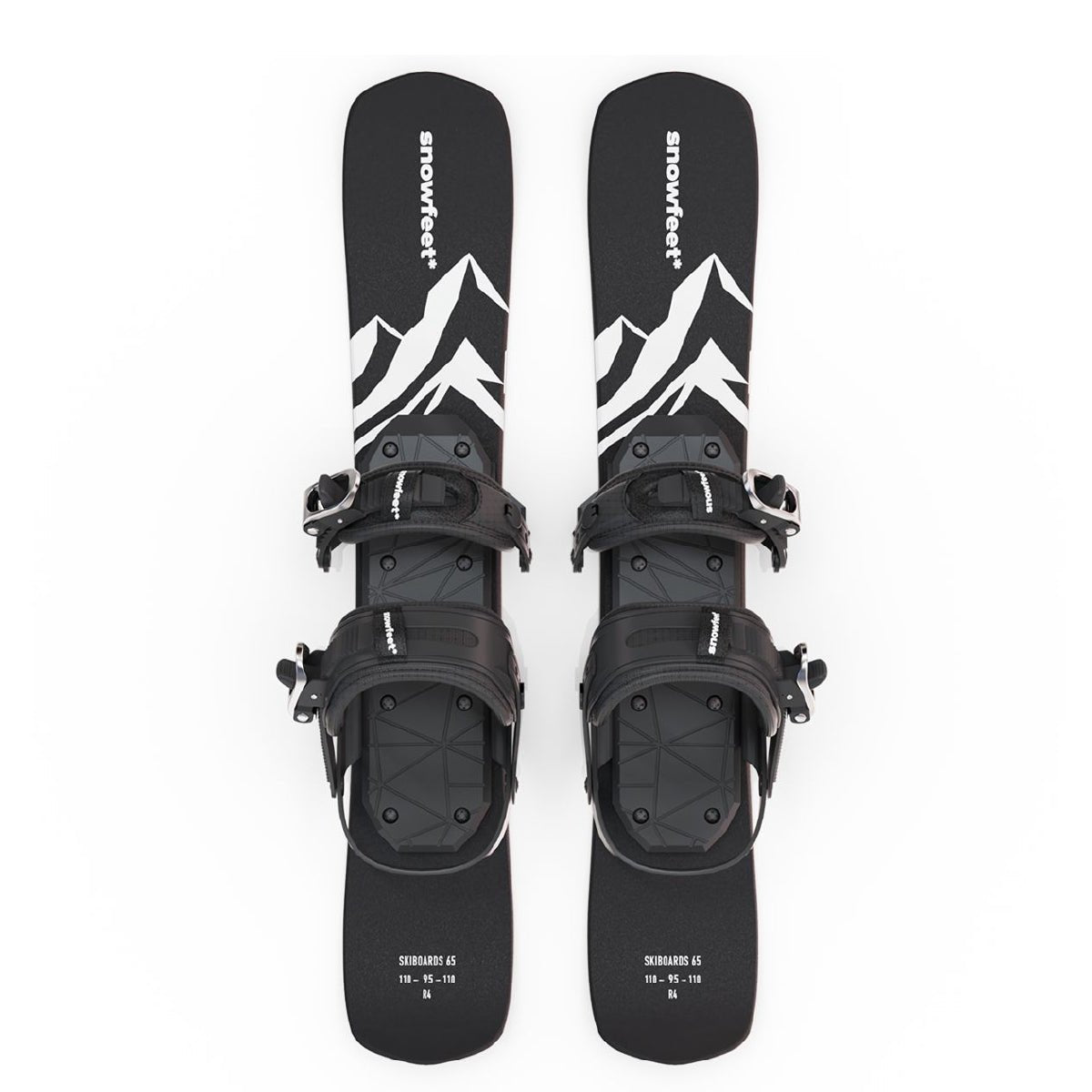
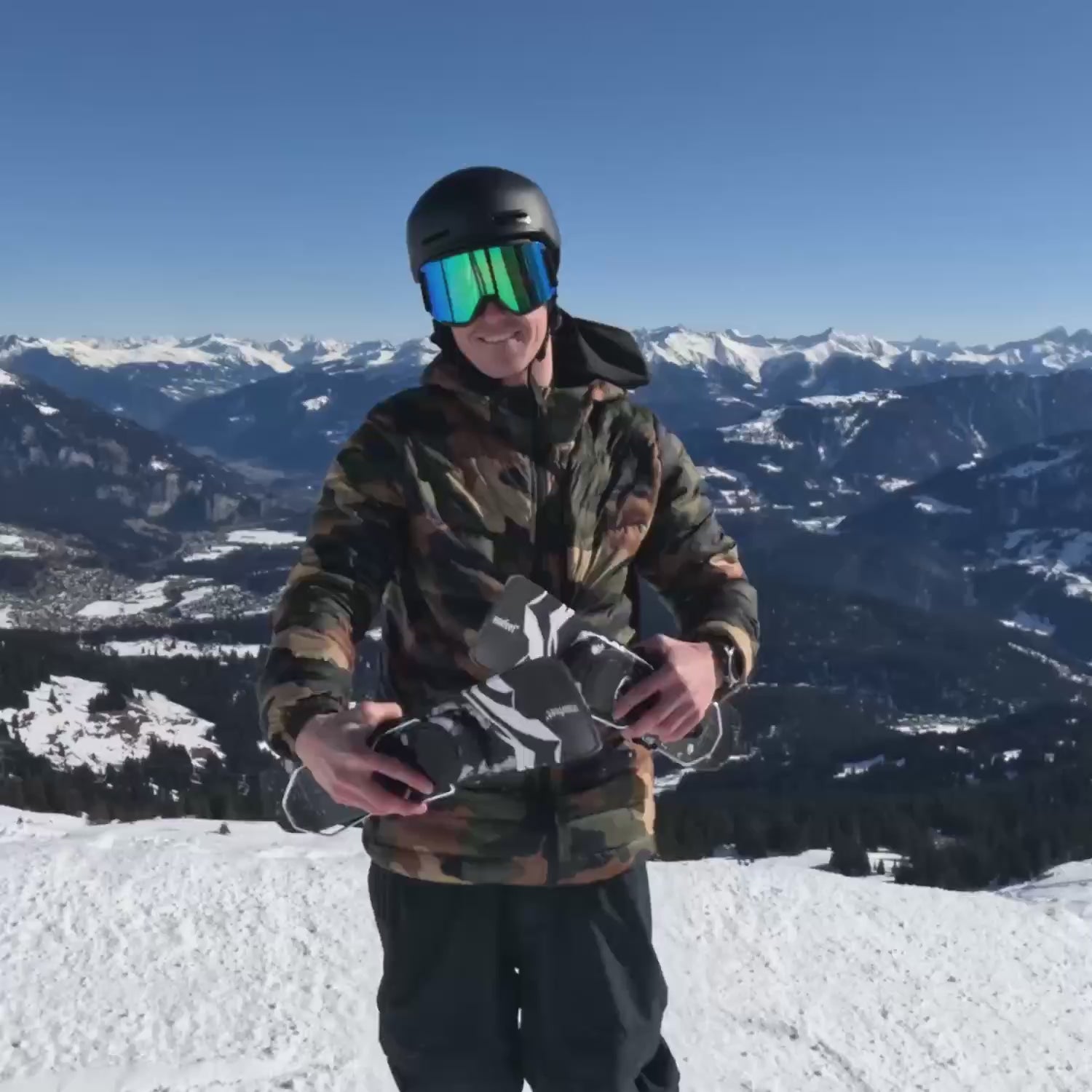
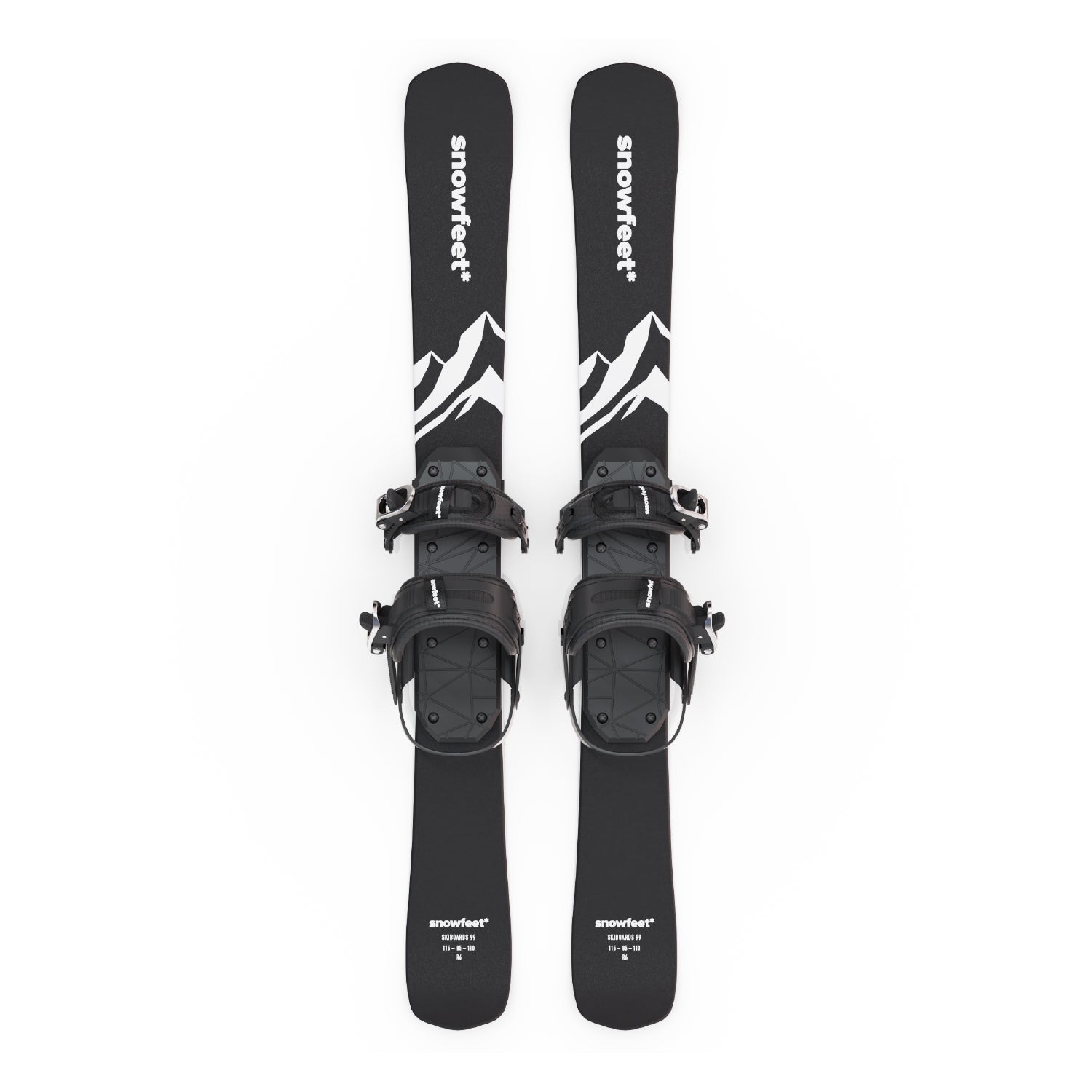
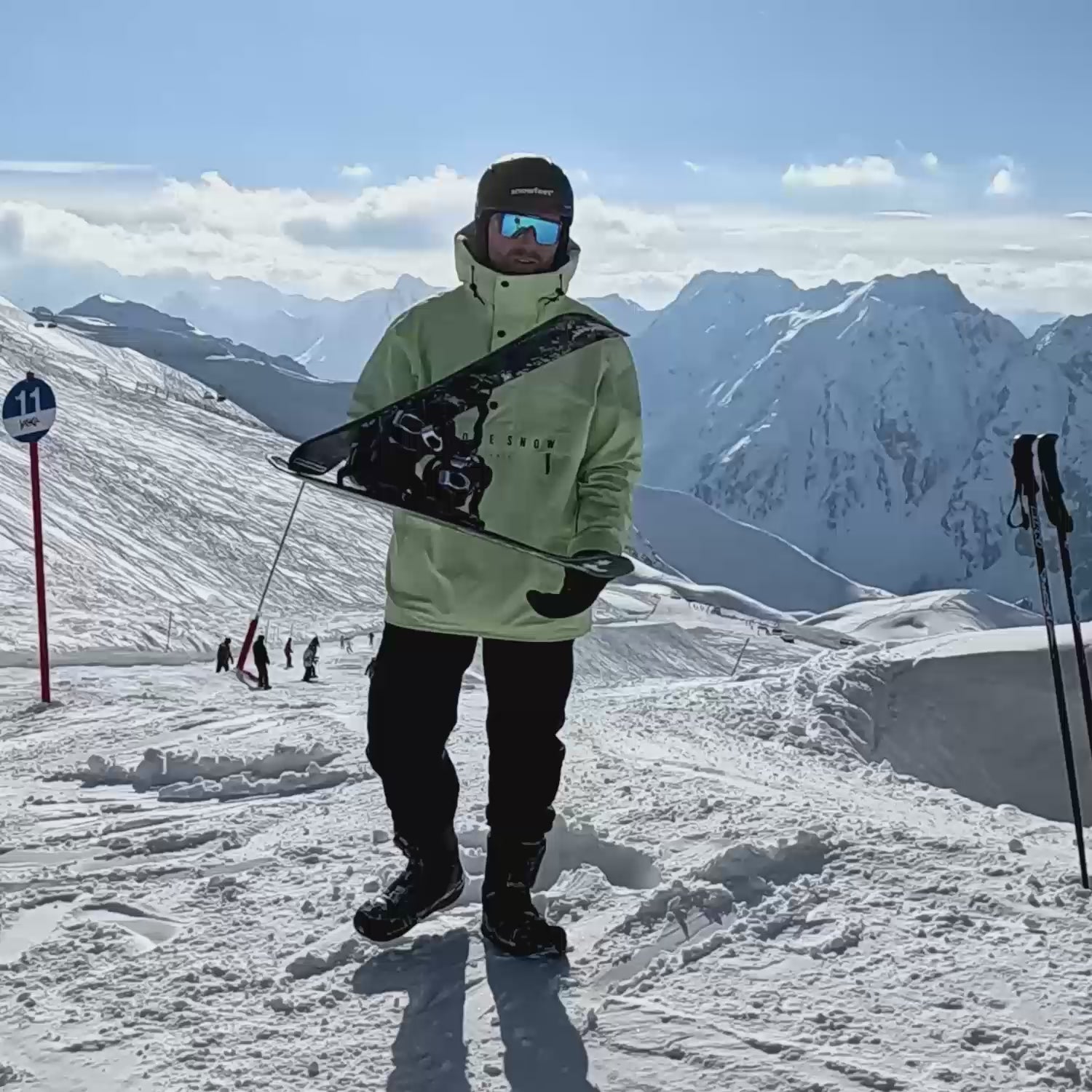
Leave a comment
This site is protected by hCaptcha and the hCaptcha Privacy Policy and Terms of Service apply.